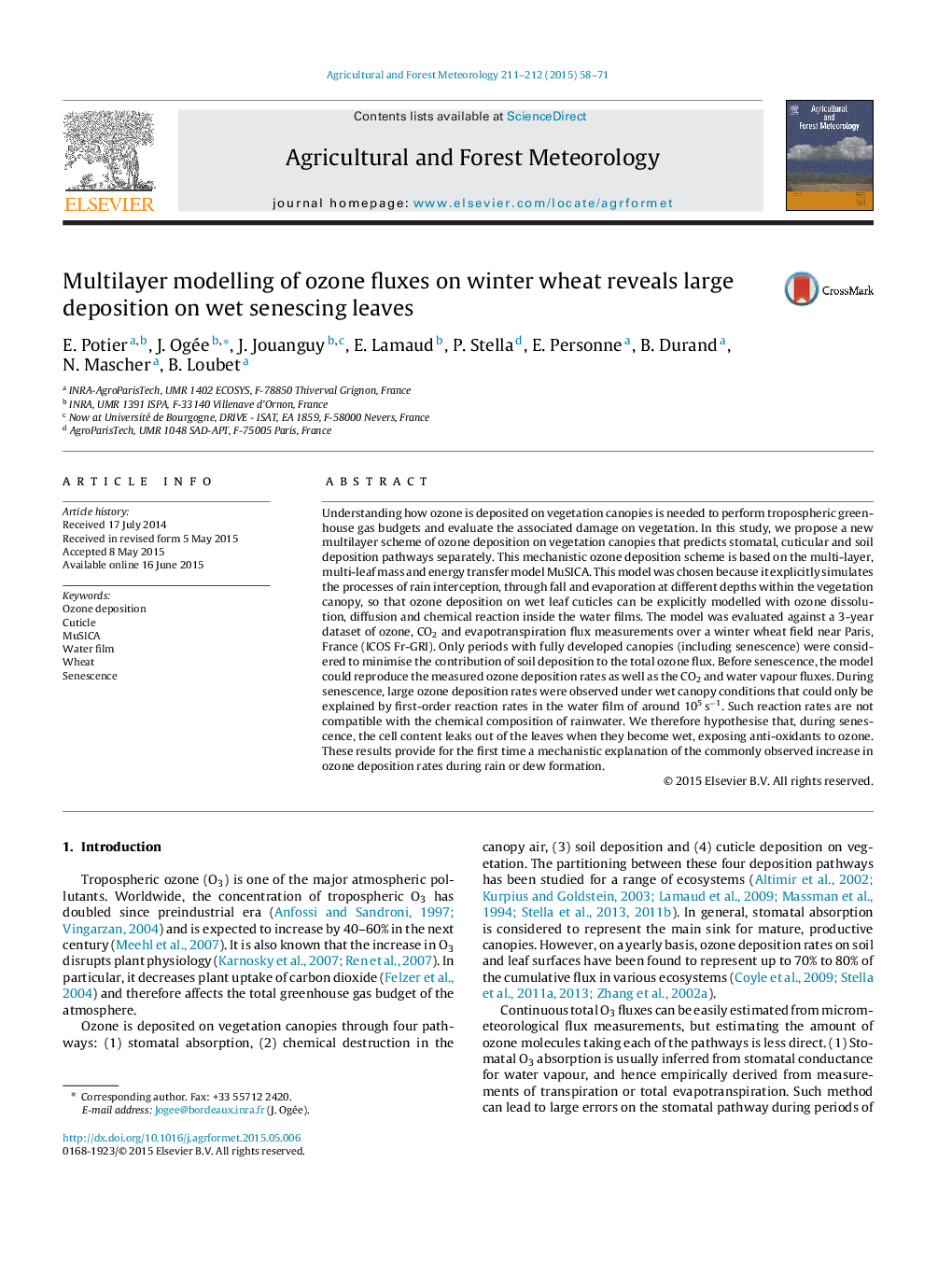| کد مقاله | کد نشریه | سال انتشار | مقاله انگلیسی | نسخه تمام متن |
|---|---|---|---|---|
| 81582 | 158326 | 2015 | 14 صفحه PDF | دانلود رایگان |
• Large ozone deposition rates were observed on a wet and senescent wheat field.
• A process-based, multi-layer ozone deposition model was developed and tested.
• Ozone reaction rates ca. 105 s−1 in leaf water films explained observed deposition.
• Such reaction rates are not compatible with chemical composition of rainwater.
• We hypothesise that the cell anti-oxidant content leaks out of wet senescent leaves.
Understanding how ozone is deposited on vegetation canopies is needed to perform tropospheric greenhouse gas budgets and evaluate the associated damage on vegetation. In this study, we propose a new multilayer scheme of ozone deposition on vegetation canopies that predicts stomatal, cuticular and soil deposition pathways separately. This mechanistic ozone deposition scheme is based on the multi-layer, multi-leaf mass and energy transfer model MuSICA. This model was chosen because it explicitly simulates the processes of rain interception, through fall and evaporation at different depths within the vegetation canopy, so that ozone deposition on wet leaf cuticles can be explicitly modelled with ozone dissolution, diffusion and chemical reaction inside the water films. The model was evaluated against a 3-year dataset of ozone, CO2 and evapotranspiration flux measurements over a winter wheat field near Paris, France (ICOS Fr-GRI). Only periods with fully developed canopies (including senescence) were considered to minimise the contribution of soil deposition to the total ozone flux. Before senescence, the model could reproduce the measured ozone deposition rates as well as the CO2 and water vapour fluxes. During senescence, large ozone deposition rates were observed under wet canopy conditions that could only be explained by first-order reaction rates in the water film of around 105 s−1. Such reaction rates are not compatible with the chemical composition of rainwater. We therefore hypothesise that, during senescence, the cell content leaks out of the leaves when they become wet, exposing anti-oxidants to ozone. These results provide for the first time a mechanistic explanation of the commonly observed increase in ozone deposition rates during rain or dew formation.
Journal: Agricultural and Forest Meteorology - Volumes 211–212, 15 October 2015, Pages 58–71
